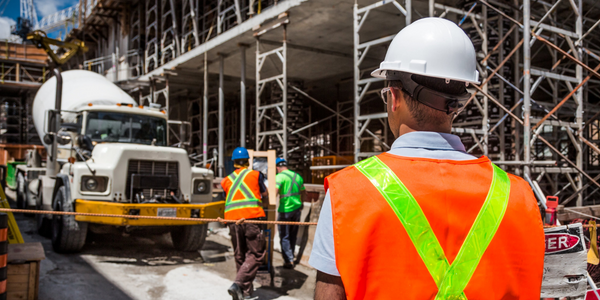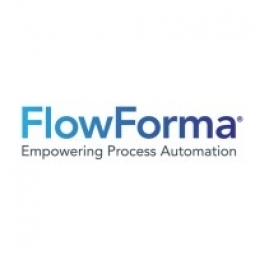公司规模
Large Corporate
地区
- Europe
国家
- United Kingdom
产品
- FlowForma Process Automation
技术栈
- Microsoft 365
- SharePoint
- Teams
实施规模
- Enterprise-wide Deployment
影响指标
- Productivity Improvements
- Cost Savings
技术
- 平台即服务 (PaaS) - 应用开发平台
- 应用基础设施与中间件 - 数据交换与集成
适用行业
- 建筑与基础设施
适用功能
- 离散制造
- 质量保证
用例
- 施工现场监控
服务
- 云规划/设计/实施服务
- 系统集成
关于客户
Coinford 是一家在英格兰东南部运营的建筑公司。该公司拥有 120 名办公室员工,另有 900 名员工在该地区约 30 个工地工作。该公司以经验丰富和专业精神赢得了来之不易的声誉,从大规模挖掘到建造混凝土框架上部结构,在施工过程的每个环节都表现出色。与许多建筑公司一样,现场工作与后台职能之间存在脱节,物理流程与数字流程之间的差距导致了瓶颈。该公司希望它们标准化和透明化,最新信息可以在仪表板上看到,而不是通过电子邮件和电话费力地追踪。
挑战
Coinford 是一家位于英格兰东南部的建筑公司,它面临着现场工作与后台职能之间脱节的问题。物理流程和数字流程之间的这种差距造成了瓶颈。该公司希望这些流程标准化、透明化,最新信息可以在仪表板上看到,而不是通过电子邮件和电话费力地追踪。归档和存储与现场相关的文档很困难;检索它们以进行审计非常耗时,尤其是在文件丢失的情况下。项目经理 Suzy Pinsent 解释说,该公司已经找到了解决方案。这一决定与向 Microsoft 365 的迁移以及采用 SharePoint 和 Teams 进行文档管理同步进行。
解决方案
经过三天的培训课程,Suzy Pinsent 满怀信心地开始使用 FlowForma Process Automation,启动了将施工现场与后台办公室数字化连接的流程开发。迄今为止,已有 25 个流程实现数字化,健康和安全是早期受益者。以前,人们用数码相机拍照并通过电子邮件分享,以提供已完成任务的视觉清单。如今,使用平板电脑上的摄像头并通过 5G 提供连接,FlowForma Process Automation 可以捕获图像并立即记录在 SharePoint 中的指定文件中。大约 10 个 QA(质量保证)任务也已全部转移到 FlowForma Process Automation。具体来说,在将混凝土浇筑到地基之前,地面承重板检查是每个新建筑的基础。工程师和现场经理通过 FlowForma Process Automation 收到检查通知,并被提示填写清单。勾选所有框后,将向客户发送准备阶段报告以供签字,以批准浇筑混凝土。
运营影响
数量效益

Case Study missing?
Start adding your own!
Register with your work email and create a new case study profile for your business.
相关案例.

Case Study
IoT System for Tunnel Construction
The Zenitaka Corporation ('Zenitaka') has two major business areas: its architectural business focuses on structures such as government buildings, office buildings, and commercial facilities, while its civil engineering business is targeted at structures such as tunnels, bridges and dams. Within these areas, there presented two issues that have always persisted in regard to the construction of mountain tunnels. These issues are 'improving safety" and "reducing energy consumption". Mountain tunnels construction requires a massive amount of electricity. This is because there are many kinds of electrical equipment being used day and night, including construction machinery, construction lighting, and ventilating fan. Despite this, the amount of power consumption is generally not tightly managed. In many cases, the exact amount of power consumption is only ascertained when the bill from the power company becomes available. Sometimes, corporations install demand-monitoring equipment to help curb the maximum power demanded. However, even in these cases, the devices only allow the total volume of power consumption to be ascertained, or they may issue warnings to prevent the contracted volume of power from being exceeded. In order to tackle the issue of reducing power consumption, it was first necessary to obtain an accurate breakdown of how much power was being used in each particular area. In other words, we needed to be able to visualize the amount of power being consumed. Safety, was also not being managed very rigorously. Even now, tunnel construction sites often use a 'name label' system for managing entry into the work site. Specifically, red labels with white reverse sides that bear the workers' names on both sides are displayed at the tunnel work site entrance. The workers themselves then flip the name label to the appropriate side when entering or exiting from the work site to indicate whether or not they are working inside the tunnel at any given time. If a worker forgets to flip his or her name label when entering or exiting from the tunnel, management cannot be performed effectively. In order to tackle the challenges mentioned above, Zenitaka decided to build a system that could improve the safety of tunnel construction as well as reduce the amount of power consumed. In other words, this new system would facilitate a clear picture of which workers were working in each location at the mountain tunnel construction site, as well as which processes were being carried out at those respective locations at any given time. The system would maintain the safety of all workers while also carefully controlling the electrical equipment to reduce unnecessary power consumption. Having decided on the concept, our next concern was whether there existed any kind of robust hardware that would not break down at the construction work site, that could move freely in response to changes in the working environment, and that could accurately detect workers and vehicles using radio frequency identification (RFID). Given that this system would involve many components that were new to Zenitaka, we decided to enlist the cooperation of E.I.Sol Co., Ltd. ('E.I.Sol') as our joint development partner, as they had provided us with a highly practical proposal.

Case Study
Splunk Partnership Ties Together Big Data & IoT Services
Splunk was faced with the need to meet emerging customer demands for interfacing IoT projects to its suite of services. The company required an IoT partner that would be able to easily and quickly integrate with its Splunk Enterprise platform, rather than allocating development resources and time to building out an IoT interface and application platform.

Case Study
Bridge monitoring in Hamburg Port
Kattwyk Bridge is used for both rail and road transport, and it has played an important role in the Port of Hamburg since 1973. However, the increasing pressure from traffic requires a monitoring solution. The goal of the project is to assess in real-time the bridge's status and dynamic responses to traffic and lift processes.

Case Study
Bellas Landscaping
Leading landscaping firm serving central Illinois streamlines operations with Samsara’s real-time fleet tracking solution: • 30+ vehicle fleet includes International Terrastar dump trucks and flatbeds, medium- and light-duty pickups from Ford and Chevrolet. Winter fleet includes of snow plows and salters.

Case Study
Condition Based Monitoring for Industrial Systems
A large construction aggregate plant operates 10 high horsepower Secondary Crusher Drive Motors and associated conveyor belts, producing 600 tons of product per hour. All heavy equipment requires maintenance, but the aggregate producer’s costs were greatly magnified any time that the necessary maintenance was unplanned and unscheduled. The product must be supplied to the customers on a tight time schedule to fulfill contracts, avoid penalties, and prevent the loss of future business. Furthermore, a sudden failure in one of the drive motors would cause rock to pile up in unwanted locations, extending the downtime and increasing the costs.Clearly, preventative maintenance was preferable to unexpected failures. So, twice each year, the company brought in an outside vendor to attach sensors to the motors, do vibration studies, measure bearing temperatures and attempt to assess the health of the motors. But that wasn’t enough. Unexpected breakdowns continued to occur. The aggregate producer decided to upgrade to a Condition Based Monitoring (CBM) sensor system that could continually monitor the motors in real time, apply data analytics to detect changes in motor behavior before they developed into major problems, and alert maintenance staff via email or text, anywhere they happened to be.A wired sensor network would have been cost prohibitive. An aggregate plant has numerous heavy vehicles moving around, so any cabling would have to be protected. But the plant covers 400 acres, and the cable would have to be trenched to numerous locations. Cable wasn’t going to work. The aggregate producer needed a wireless solution.




